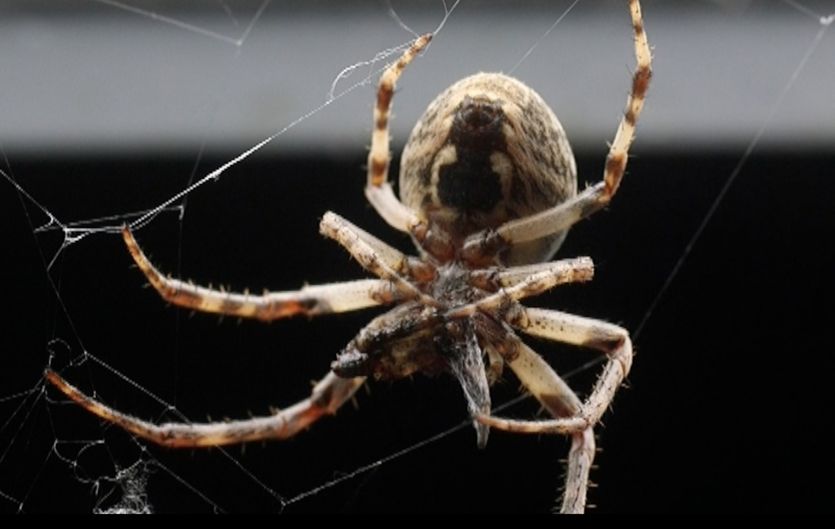
Crawling. With. Spiders.
But this is no Halloween tale. The $60 million bridge that spans the Scioto River and connects Downtown to Franklinton really is infested with thousands of orb weavers spinning intricate webs up and down the hand and guardrails.
If you pay close attention during the day, you can see the sun playing off the silk strands woven round and round on nearly every open span on the steel structure.
But at night, you can really see the webs, snagging thousands of flying insects that live in and around the river. (You can tell how successful the hunters are at night by all the repair work being done during daylight.)
"It's the night lights there (on the bridge)," said David Shetlar, an Ohio State University professor of urban landscape entomology who toured the site one night this week.
"All the midges, mayflies and caddisflies go up to the lights. Spiders aren't dumb — they go to where the food sources are."
One is an arabesque orb-weaver, which is known for its graceful weaving. Another is something out of a arachnophobe's nightmare — it's called a long-jawed orb weaver.
"It looks like it has four jaws," Shetlar said. "They are bizarre-looking things."
Shetlar estimated that the bridge is currently home to 5,000 to 10,000 spiders.
Jim McCormac, a naturalist with the Ohio Division of Wildlife, toured the bridge as well.
"The guard rails are made perfectly for orb-weaving spiders," he said. "You see spider webs on bridges, but not to this degree."
He said the sheer number likely speaks to the health of the river, which has seen a transformation in recent years.
A $35.5 million project narrowed the river to expose an area that is being morphed into a 33-acre park with 800 trees and 75,000 plants.
"There is more insect life," McCormac said. "And that spawns the spiders. If they don't have things to eat, they are not going to be there."
Spiders typically hatch in spring and fall. To get around, tiny spiderlings cast a bit of silk into the air and let the wind take them far and wide. It's called ballooning.
If there is plenty of food where they land, they'll stay. If there isn't, they'll balloon again.
The Main Street bridge has both mature spiders and spiderlings, which means some showed up in the spring, some are newcomers and some likely lived through this past winter.
"Most adult and larger immature spiders can survive down to 20 to 25 degrees," Shetlar said. " Spiderlings, on the other hand, convert some of blood into a type of antifreeze ... and will hunker down in cracks and crevices.
"They can withstand temperatures to about 10-below."
Richard Bradley, an entomologist and professor emeritus at Ohio State, said infestations are not rare in spots where there are a lot flying insects, such as midges and mayflies.
There are areas along Lake Erie where boat docks and houses are covered in spider webs.
"We tend to notice them when they grow to be mature," said Bradley, who wrote the book on spiders. (He really did — it's called Common Spiders of North America.) "And that means they are successful."



Reader Comments
to our Newsletter